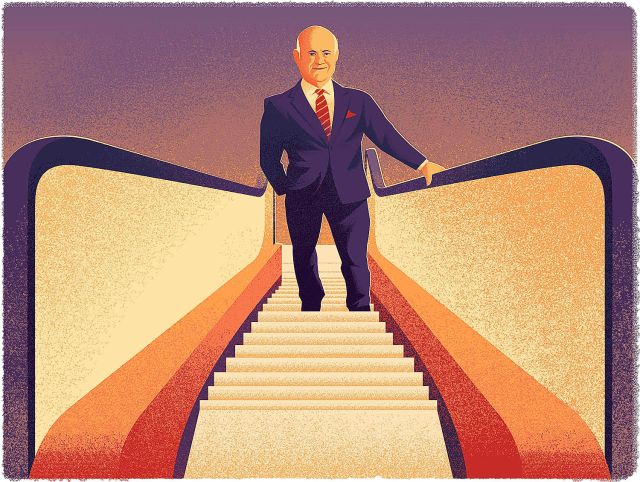
Jeffrey Gural, Eric Gural and Brian Steinwurtzel.
Jeffrey Gural, Eric Gural and Brian Steinwurtzel
Chairman; co-CEOs at GFP Real Estate
Last year's rank: 36

The New York City office market is still reeling in the wake of COVID-19, but GFP Real Estate’s method of leasing and property management has helped keep it toward the front of the pack.
Alongside roughly 4 million square feet of space it manages on behalf of third-party firms, GFP owns about 13.8 million square feet in the New York tri-state area, most of which are legacy properties, typically much easier to manage than newer developments. Its commitment to long-standing relationships with tenants and its focus on upgrading its buildings and amenities has also largely contributed to the firm’s impressive occupancy rate, which is near 100 percent.
GFP also clearly likes working with stable tenants largely unaffected by Wall Street swings, particularly government agencies and nonprofits. The latter makes up about a third of GFP’s tenant base.
Case in point: In July of last year, the firm signed Acumen Fund, which invests in businesses aimed at assisting low-income individuals, to an 11-year extension for its nearly 12,000 square feet at 40 Worth Street in Tribeca. Acumen wanted to lock in a lower price early rather than wait until its lease expired in 2026 — a good idea, but with a landlord like GFP, perhaps ultimately unnecessary.
“We’ve always looked to nonprofits because we’ve given them a cheap deal,” Jeffrey Gural told Commercial Observer at the time. “When a nonprofit’s lease is up, we typically, in a good market, won’t give them a big increase.”
GFP has also made great strides in the office-to-residential department. Its most notable project on that front is undoubtedly New York’s Flatiron Building, which GFP secured ownership of last May. But the firm is likewise in the process of working with its partners to convert the 1.1 million-square-foot 25 Water Street in Manhattan into 1,300 apartment units.
“We are taking advantage of the opportunity to buy these assets at historically very low prices, as well as the zoning that allows us to convert these to residential,” Brian Steinwurtzel said. “New York City is a place that people want to live, and there has been very little supply of new residential units coming online. And, so, we feel like there’s an opportunity to buy inexpensive office buildings and turn them into residential buildings and to meet that demand.”








